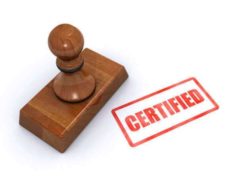
Introduction
When it comes to buying or selling a property, it is essential to understand the concept of encumbrances. An encumbrance is a legal concept that can affect the use, possession, or transfer of property rights by restricting or limiting the owner’s interest in a property. In other words, an encumbrance is a claim against a property that is attached to the property title. It is vital to identify and understand any encumbrances associated with a property during the buying or selling process to avoid any potential legal disputes in the future. This article provides a comprehensive overview of encumbrances, including their types, effects on property, and how to avoid them.
Types of Encumbrances
There are several types of encumbrances that can affect real estate property rights. They include:
1. Liens
A lien is a legal claim that a creditor makes against a property for unpaid debts or obligations. A lien can be placed by a government entity, such as a municipality, for unpaid property taxes, or by a contractor who was not paid for work done. If a property owner does not satisfy the debt or obligation, the lienholder can force the sale of the property to recover the money owed. It is important to note that liens are attached to the property, not the person, so they are transferred to the new owner when the property is sold.
2. Easements
An easement is a legal right to use or access someone else’s property without possessing it. For instance, an easement may allow access to a neighboring property or for a utility company to lay cables or pipelines through a property. Easements can be either affirmative or negative. An affirmative easement allows someone else to do something, while a negative easement restricts the owner from doing something.
3. Covenants
A covenant is a legal agreement between property owners that restricts the use or activities on a property. For instance, a covenant may prohibit the building of certain structures, the use of certain colors, or the keeping of certain animals. These agreements are often recorded in the property’s title documents, and they stay in effect even if the property changes ownership.
4. Mortgages
A mortgage is a type of lien that a lender puts on a property as collateral for a loan. If the property owner cannot repay the loan, the lender has the right to force the sale of the property to recover their money. Mortgages are often used to finance the purchase of homes, and they have a significant impact on the cost of buying a property.
Effects of Encumbrances on Property Rights
Encumbrances can have a significant impact on property rights, particularly if they are not identified or understood during the purchase or sale process. Here are some of the potential effects of encumbrances on property:
1. Limited use of property
Encumbrances can limit the use of a property, making it difficult for the owner to fully utilize the property as desired. For instance, an easement may prevent the installation of a swimming pool, limiting the owner’s use of the outside area.
2. Reduced property value
Some encumbrances can have a negative impact on the value of a property. For instance, a lien may reduce the property’s value because it can make it more difficult to transfer ownership or refinance a mortgage.
3. Legal disputes
If encumbrances are not identified or understood during the purchase or sale process, they can lead to legal disputes between the parties involved. For instance, if a buyer discovers an undisclosed lien on a property after closing, they may sue the seller for damages.
How to Avoid Encumbrances
To avoid the potential negative effects of encumbrances on your property, it is essential to identify and understand them upfront. Here are some tips to avoid encumbrances:
1. Get a title search
A title search can help identify any liens, easements, or covenants on a property’s title. This search can be conducted by a title company or real estate attorney and provides valuable information that can help buyers or sellers make informed decisions.
2. Ask for disclosures
During the property buying process, sellers are required to disclose any known defects or issues with the property, including encumbrances. Potential buyers should ask sellers for a detailed list of any known encumbrances before making an offer.
3. Work with a real estate agent
A professional real estate agent can help buyers or sellers navigate the complex process of property transactions. They can provide advice on how to identify and avoid encumbrances and negotiate with sellers or buyers if an encumbrance is discovered.
Conclusion
Encumbrances may limit the use or transfer of property rights, affect property value, and lead to legal disputes. To avoid these potential negative effects, it is essential to identify and understand any encumbrances upfront. Types of encumbrances include liens, easements, covenants, and mortgages. To avoid encumbrances, potential buyers or sellers should get a title search, ask for disclosures, and work with a professional real estate agent. Being informed about encumbrances is key to making informed decisions in the property buying or selling process.
Background
An encumbrance is a debt, claim, or lien left on a property that is attached, and can affect it’s value, transfer, and title. There are different types of encumbrances, such as, taxes, mortgages, liens, environmental, etc.. Some encumbrances deal with monetary holds, such as liens and mortgages. Others can deal with other things such as zoning laws, encroachment, and certain restrictions.
Liens are a form of collateral that is held on a property for a debt owned. Encroachments refer to a structure of a property whether it be a building, home, fence, etc.. that is crossing over the property lines onto another private property. Encumbrances must be made clear to any potential buyers of a property prior to the purchase, and must be fully disclosed. A list of encumbrances will be given to the prospective owner regardless of its influence of the value or sale of the property, and none can be withheld.
Private Encumbrances
A private encumbrance differs from public ones, in that it deals with the claims on a property through a private entity such as a business, or individual. They do not deal with any government organization or agencies and their claims. Some common examples of private encumbrances are, judgment liens, mechanic’s liens, and easements. Judgment liens deal with an unpaid damage from a lawsuit that the land owner faced at a given point.
A mechanic’s lien has to do with a debt owed to a person or company ( such as a contractor) for a service on the property. This debt can also include the cost of materials for the job or service performed. Easements placed on a property give the right to use a part of that property to another person or company. They can be for the use of utility companies for service purposes, or benefit a private owner to acquiring full use and enjoyment over their property.
Zoning
The purpose of zoning laws is to regulate how a property or land will be used, that is beneficial to the community or general public. These laws categorize a land under its use and then have sub regulations in each of those categories to further regulate a property. These categories are the following: residential, recreational, industrial, commercial, and agricultural. The limits these laws place on a property can deal with the structures on that property.
For instance, they can regulate the size of a home both height and width as well as whether it is a single or multiple family dwelling. For commercial property they can regulate the size of hallways within buildings as well as emergency exits, and the capacity of a building. Zoning laws basically protect the public from a property abuse by any type of property that will be a nuisance or invade another property in any way.
Building Codes
Buildings codes are set to enforce the safety and proper function of operations within a building structure. Usually seen in commercial buildings, these codes enforce everything from fire safety to workplace safety. Building codes for fire safety are usually set by the local fire department’s fire marshal. These codes can regulate the maximum number of people that can be inside an establishment at the same time, as well as the number of fire exits that the building contains.
They also regulate how many fire safety devices must be installed in the building (fire extinguishers/hoses, smoke detectors, fire alarms, etc..), and at what frequency or abundance. Building codes can also relate to the requirements a structure must meet in natural disaster prone areas. These can be countermeasures for hurricanes, earthquakes, floods, and others. These codes also deal with other aspects, but generally they are set to maintain an overall safety within and outside of a structure.
Environmental Protection
Environmental protection laws are set to protect the environments from any damage or misuse by people near or around them. These laws can refer to where a property is built and restricted from being built such as reservation areas. They list guidelines that developers must follow when constructing new structures near these protected areas, as well as certain areas crucial to the environment that are not protected.
The environmental protection laws also deal with the types of materials that are used in any type of construction, industrial machinery, etc.. and regulations of their use. For companies creating certain hazardous material, there are requirements for the creation, use, and discarding of such products in relation to environmental laws as well. These laws are set to prevent any damage to an essential part of human life, most clearly seen in laws protecting our clean water systems and banning the dumping into them.
Easements
Easements are the use of a piece of a private property by another person or group for a specific purpose or use gaining an interest over that property. The two most common types of easements are appurtenant easements, and easements in gross. Appurtenant easements refer to cases where the land use is by another private owner, and can be granted by the owner of the land where the easement is located. It deals with a servient tenement (where the easement will be located) and a dominant tenement (the holder of the easement, and user of the land).
In appurtenant easements, the dominant tenement selling their property entails the new owner to acquire the easement automatically. This type of easement benefits the dominant tenement over the servient tenement. Easements in gross deal with the use of a land that does not benefit any particular person or party. They are most commonly used by utility companies seeking the use of land to provide services, or install structures or components for their companies.
Licenses
A license grants the permission of a person to take part in an action or group of actions within the real private property of another owner. Unlike easements, licenses do not grant an interest in property to that person, they simply are a permission or authority to use that land at as indicated. Sometimes, licenses can be compensated for by the licensee, and can be established in various ways. A license can be given by a verbal agreement, and revoked at any time as needed, by the land owner.
When a license is inscribed in a written agreement, and even compensated for, it becomes irrevocable by the owner. Licenses can be implied by signs or advertisements in the cases of stores and their owners. For example, a store placing a sign outside urging prospective customers to come in and shop, is an invitation for those who read it to enter and shop in the store. Implied licenses can be abolished at any time, and any person found to be within the property after such revocation, can be prosecuted as a trespasser.

























